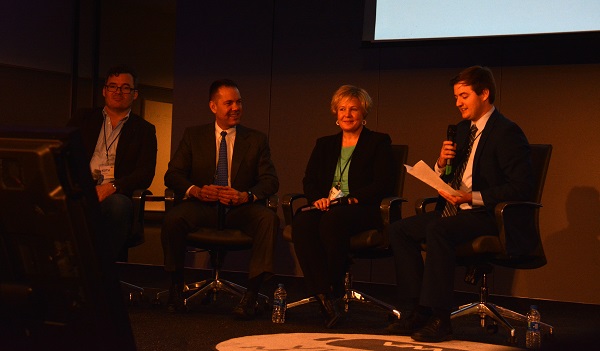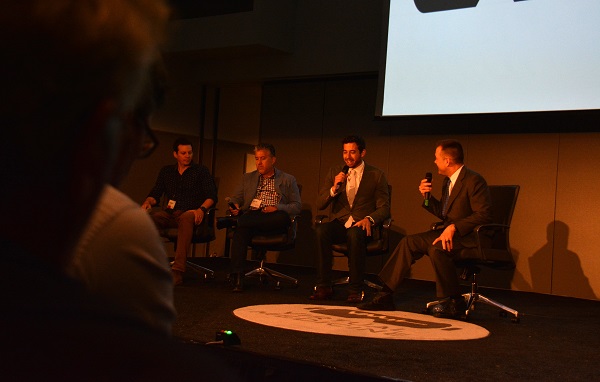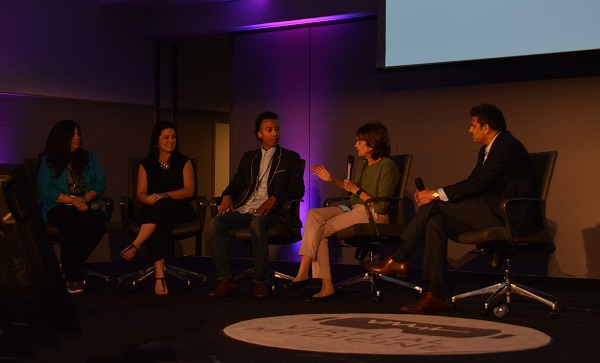by Dot Cannon
“Right after lunch,” joked one Virtual Medicine Conference attendee.
Day Two’s first afternoon session of Cedars-Sinai’s inaugural medical-VR conference, themed “Best Practices in Medical Virtual Reality”, was under way in Los Angeles. And Dr. Justin Barad was using virtual reality to simulate a knee-surgery procedure, right on the conference stage.
Dr. Barad, who is a pediatric orthopaedic surgeon and Osso VR Founder/CEO, explained how his work combined two areas of expertise.
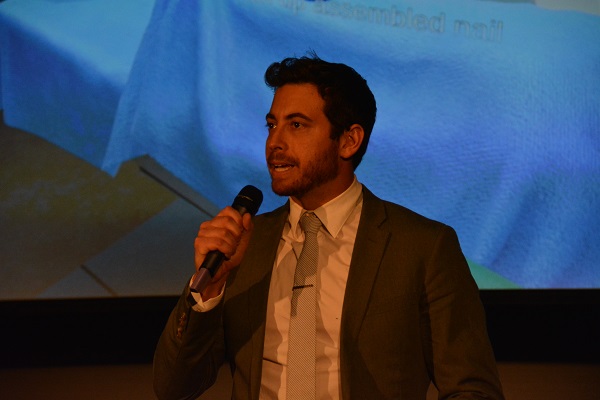
“Before I got into medicine, I actually was a game developer,” he said. “Illness in my family (inspired me to go to medical school and become an orthopaedic surgeon)”.
Any squeamishness aside, getting to see him do the procedure was mind-blowing.
So was just about everything else about this groundbreaking March conference in Los Angeles, which Cedars-Sinai Health System Director of Health Services Research Dr. Brennan Spiegel had organized. Dr. Spiegel, who is also Cedars-Sinai’s Director and Founder of Virtual Medicine, put together two days filled with panels, speakers and cutting-edge practices involving the use of virtual reality in the medical profession.
Doing justice to that afternoon of March 29th is impossible, given the number of roundtables and excellent speakers we heard. Here are just a few of our personal favorite takeaways from the afternoon.
VR: an implement of empathy
“(Have) you guys heard anything about empathy training for providers?” asked Dr. Spiegel, as he moderated the afternoon’s first panel, “Psychiatric and Neurocognitive Applications of VR and AR”.
Panelists Dr. Kate Donovan, of Boston Children’s Hospital, Dr. Brandon Birckhead of Cedars-Sinai, TEDX speaker and futurist Dr. Rafael Grossman, and Dr. Keith Grimes, of VR Doctors, said “yes”.
Among the empathetic uses of VR which they discussed: the process of putting a younger person in an “older person’s body”, virtually, to help him or her understand the challenges with which the senior patient is dealing. A second area in which they said they’d seen virtual reality lead to “walking a mile in the other person’s shoes” was that of weight loss. Virtual reality, they agreed, allowed a healthcare provider to experience obesity, rather than simply observing it and making recommendations.
“As a doctor who’s been a patient myself, I can tell you, when you see it from the other side, everything changes,” Dr. Birckhead commented.
VR as an educator
“At the end of a five-year (span), almost a third of surgeons are unable to operate independently,” said Dr. Barad during the “Training Doctors with VR and AR” panel. “(VR) is already being used globally (for training). At this point, the…challenge is identifying areas where you can make the most impact, and train people.”
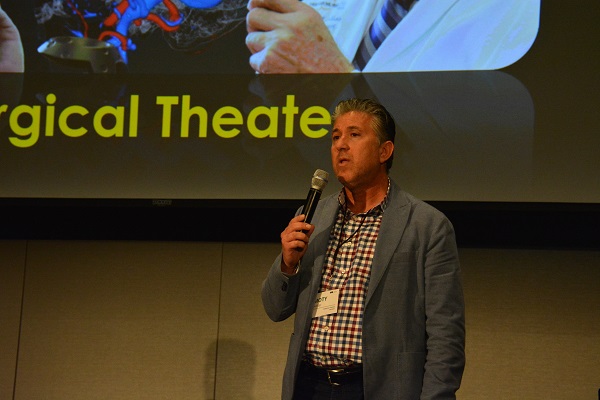
“I started Surgical Theater after serving in the Israeli Air Force,” explained Surgical Theater CEO and co-founder Dr. Moty Avisar. “I have a couple more slides, but this is the message: (it’s) how you connect patient and surgeon together.”
(Surgical Theater, according to their home page, does a complete 360-degree virtual reality reconstruction of a patient’s anatomy, through which surgeons and patients can walk!)
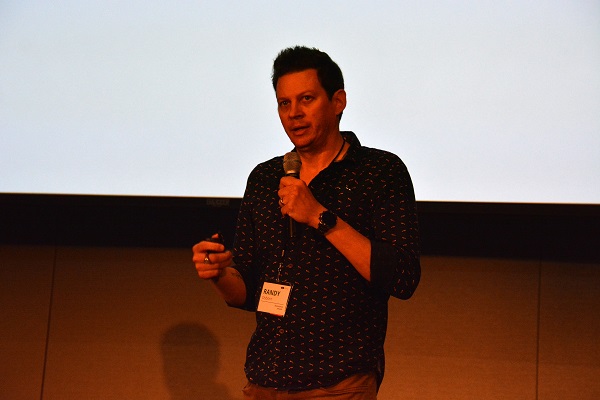
“We’re creating an immersive training lab with Duke,” said Bioflight VR President/CEO and co-founder Randy Osborn. “Fifty percent of students will take traditional surgical training, while the other fifty percent will have unlimited access to the VR laboratories.”
A recurrent theme in the program, however, was that virtual reality was not a be-all and end-all solution.
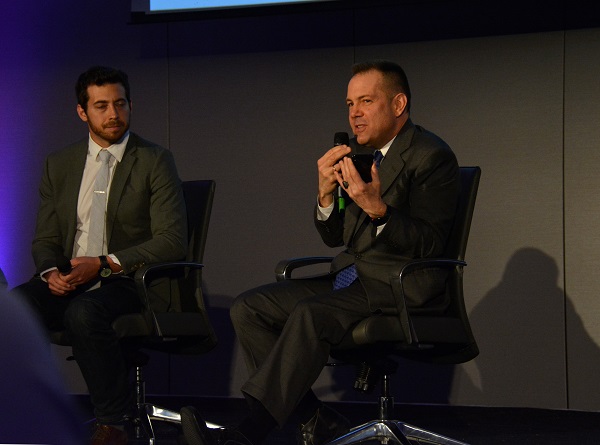
“(VR isn’t) a substitute for regular training,” said panel moderator Dr. Rafael Grossman. “It’s just an addition.”
In addition, the subject of democratizing information for patients came up.
“I think everyone should have access to this technology,” said Dr. Barad. “(But) some patients (become very upset by seeing their procedures virtually). So it’s not for everyone.”
It was, however, very comforting for one young patient, Dr. Grossman added.
“Touch surgery from the UK is really fantastic,” he said. “I have a ten-year-old patient who was really upset. I handed him my phone and he did his appendectomy in VR.”
Hello, world–welcome to VR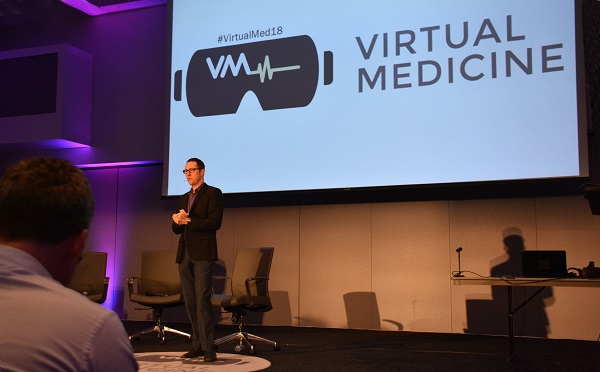
Taking the stage to introduce the next session, Dr. Spiegel shared some exciting news.
“I just heard we had 1,000 people watching us from virtual reality, around the world. So, hello,” he said.
The patients speak
A standout favorite, from the afternoon, was the next panel, “The Patient Perspective: First-Person Experiences Using Therapeutic VR”.
“This conference is so diferent from all the others,” said co-moderator Denise Silber, founder of Basil Strategies. “VR makes an immediate change. It…gives patients what they need and gives professionals the reasons they’re there.”
The three patient advocates who shared their VR experiences illustrated that statement.
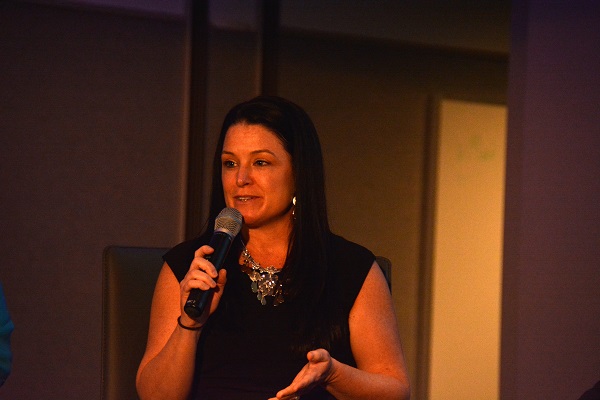
“I had the opportunity to deliver my second child through VR,” said panelist Erin Martucci, who is one of the first women in the world to experience childbirth while using virtual reality. VR, she said, made time fly by while she was in labor.
“I was comforted by the audio of a woman’s voice going through the breathing, and I used the apparatus for two hours and it only seemed like 30 minutes. I was like, ‘what are you doing?’ and the doctor said, ‘You’re ready.'”
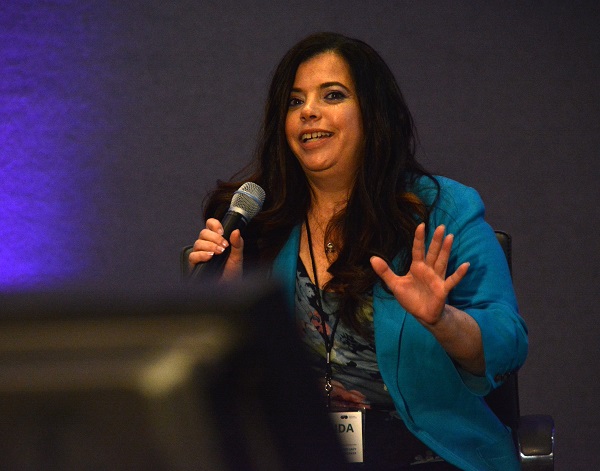
Panelist Amanda Greene told the audience that she had been diagnosed with lupus. VR, she said, had helped renew her energy at a recent health conference. At the end of a day’s sessions, exhausted, she had asked to set her bag down at a VR display and rest for a minute.
“They said, ‘only if you put a headset on.’ And suddenly, I was reaching for the sky in a helicopter. I stood for 20 minutes, when I didn’t think I could stand for two minutes. And when they took the headset off…I had energy for the night, and I don’t know what kind of drug (would have) that effect.”
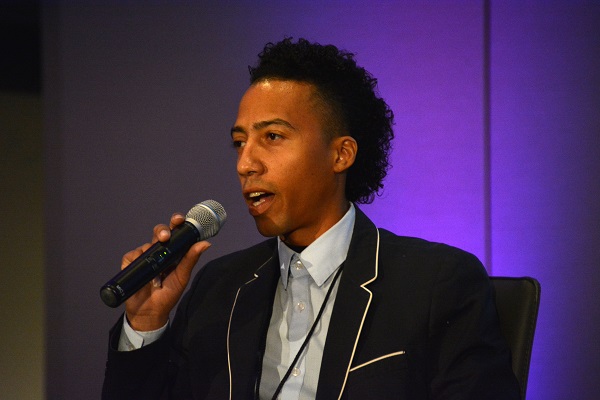
And panelist Harmon Clarke explained that he had had more than 30 surgeries, due to Crohn’s Disease and ulcerative colitis.
“One day I’m in a room (at Cedars-Sinai) and eight different nurses come in to try to give me an IV,” he said. “I’m in tears from the pain. (Then I) put on a VR headset (and was) transported to Yellowstone. What we’re working on now is a training program. Dr. Spiegel sent me home with a headset, (I’m) learning to be mindful.”
During his time in the hospital, he added, a VR “surprise”, customized to his life, contributed to his healing.
“Dr. Spiegel sends the team (to my) home without even telling me. They interviewed my grandma, then went to the park and filmed a 360-degree panorama (which they brought back to me) that just brought me such joy.”
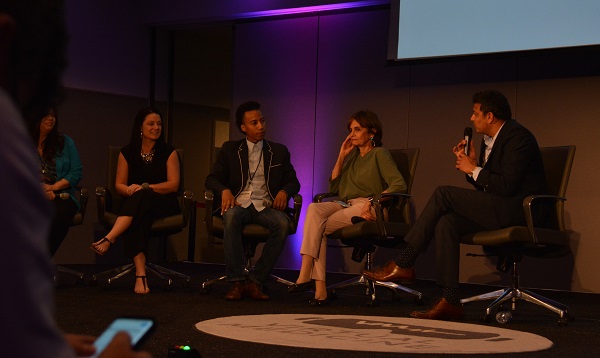
“What are your recommendations for new (VR) applications?” asked panel co-moderator and Attune Health founder Dr. Swamy Venuturupalli.
“There needs to be a VR pharmacy,” said Amanda. “Everybody has different needs or wants.”
“I think one of the most important parts is just the education,” Harmon offered. “‘Cause we’re here in Los Angeles and I would thin this (VR therapy) was available all over the world, but it’s just emerging.”
Of course, as mentioned previously, virtual reality is not suited to every patient. Dr. Venuturupalli asked if any of the panelists had seen an unfavorable reaction to the technology.
“The only one I’ve seen is from one of my friends, who has CRPS (complex regional pain syndrome,” Amanda answered. “She can’t use VR (or) she’ll have a seizure.”
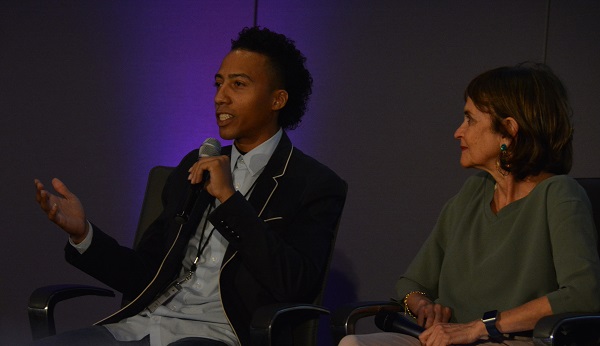
Harmon mentioned the challenge of vertigo with some VR experiences. “Some videos are 360-degree immersive,” he said. “If you’re in a hospital bed, you want something more stable.”
The musical language of emotion
The afternoon was flying by. But another standout favorite session was yet to come.
This speaker, however, was not in the medical profession.
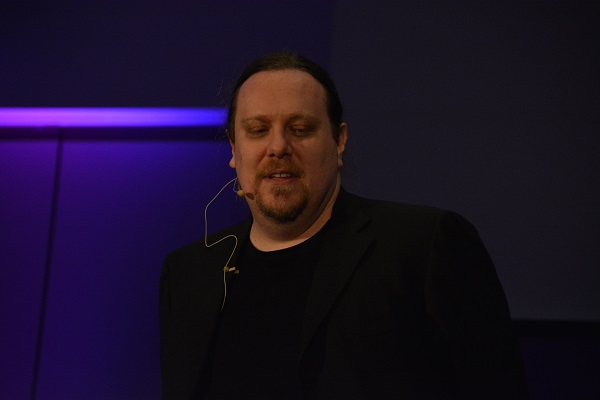
Video music composer Jeremy Soule, Executive Director of Roland Virtual Sonics, LLC, took the stage.
“I’m an entertainment guy,” he introduced himself to the room. “There are no white papers.”
Soule, who has worked with George Lucas and J.K. Rowling, is considered to be the “John Williams” of video-game music. And in his session, he would show the audience how music evokes emotions.
“Simplicity is what the brain enjoys,” he said, before showing the audience, through intervals and music’s twelve tones, how our brains translate music into emotions including happiness, sadness, terror and resolve.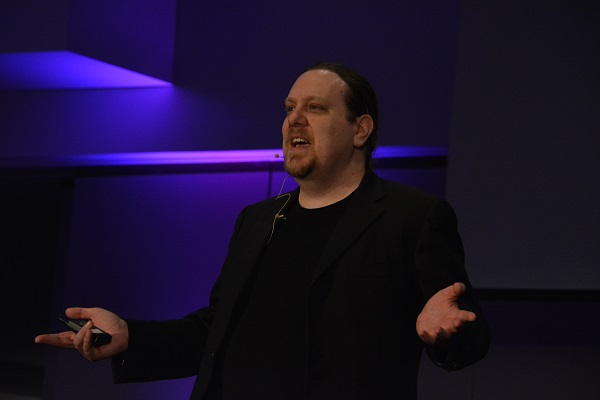
“What we’re hearing here, is more complexity,” he explained at one point, “which is why it’s sad.”
Then, he took the audience through the sense of determination. “(Here’s) an open interval. The warrior has not yet conquered.”
Perhaps the most fun was the fourth interval, though.
“The fourth interval is what I use for terror. (It sounds so diabolical that) at one point, the Catholic Church banned it.
“The brain loves simplicity, and we love the written resolve,” he concluded. “This is just the way music parallels the written language.”
VR: a signpost to the future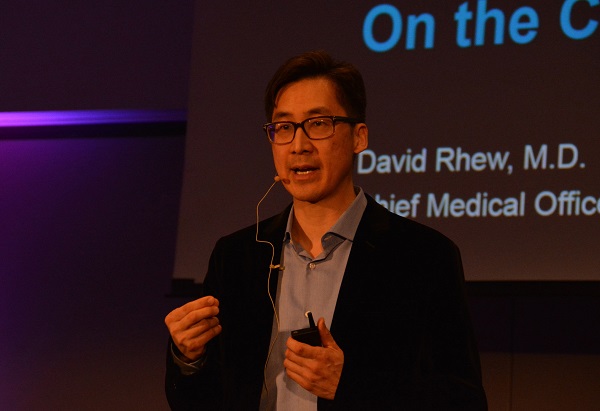
For a final keynote before the afternoon concluded, keynote speaker Dr. David Rhew, Chief Medical Officer and Head of Healthcare and Fitness for Samsung Electronics, took the stage.
Among the ideas he shared in his keynote, “On the Cutting Edge of Therapeutic Virtual Reality”: the use of VR to improve vision.
“We ran across a product called IrisVision,” he said. “Imagine living in a world where you’ve got a black spot in your vision (due to macular degeneration). With VR, we can now magnify the healthier area of the eye, to improve the vision…We’re seeing that the opportunities to use technology to improve one’s vision, are tremendous.”
Later on in his presentation, Dr. Rhew also shared the story of eight chronic paraplegics who had participated in a year-long program, Working with robotic legs and intense VR training, doctors were able to “trick” their brains into feeling their legs! At the end of the study, Dr. Rhew said, all eight patients saw improvements both in voluntary control of their muscles–and in feeling sensation.
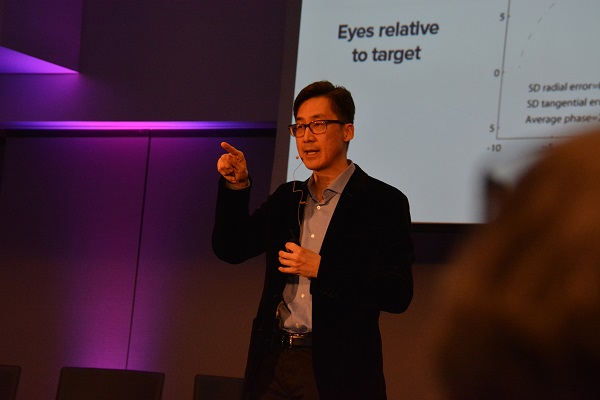
“We’re starting to realize that the brain and the nerves are very dynamic,” Dr. Rhew explained. (“VR allows us…to do things we hadn’t thought possible.) By the way, it’s currently being used by all of Stanford Athletics. Another area we’re excited about is the use of VR for seniors.”
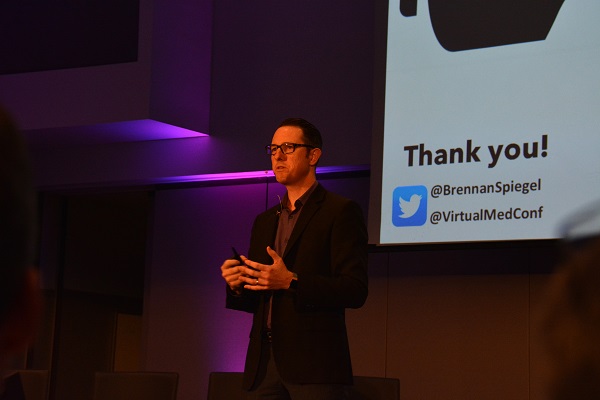
Wrapping up the conference, Dr. Spiegel emphasized a theme that had recurred in the presentations: patient-centered care.
“Let’s find the unmet need first,” he said. “Find out from the end users what they need, and then build it. Is the form factor the right form factor? Is the experience for the patient the right one?
“We need to be…really, truly listening to the user, and create tailored guidance. And I’ve heard that a lot.”
He also cautioned, again, that virtual reality was not a panacea.
“It’s important not to overpromise what VR can achieve…VR is not going to cure the opioid epidemic.”
But, Dr. Spiegel said, knowing it wouldn’t solve all problems should not prevent medical professionals from bringing virtual reality into communities, as illustrated in the morning’s SoHELP session, to see what it could accomplish.
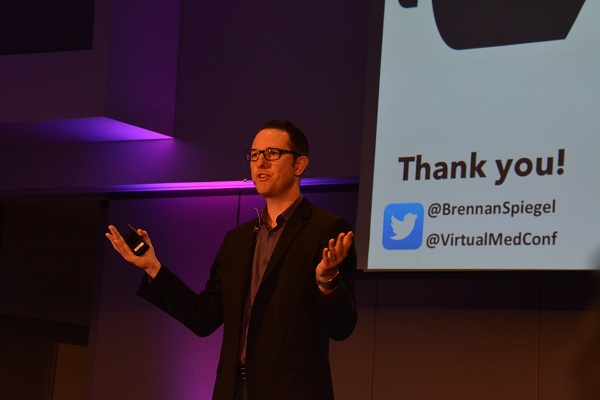
“What are the unmet needs in your community that need to be addressed?” he challenged the audience.
And he outlined some possible future directions for the use of medical virtual reality.
“Here at Cedars-Sinai, we’re doing a study, hoping to reduce opioid prescribing…We can, through VR, learn all sorts of different things…I want to be able to put in a console for the virtualist. I want to be able to put in my prescription, and the virtualist will be able to supply the experience needed.”
Another exciting vision?
“We need to build…a virtual reality clinic. We’re thinking of doing that here (at Cedars-Sinai).”
But, perhaps the most exciting of his comments sounded like an immediate promise.
“Thank you for coming to Virtual Medicine. We hope to see you next year.”

